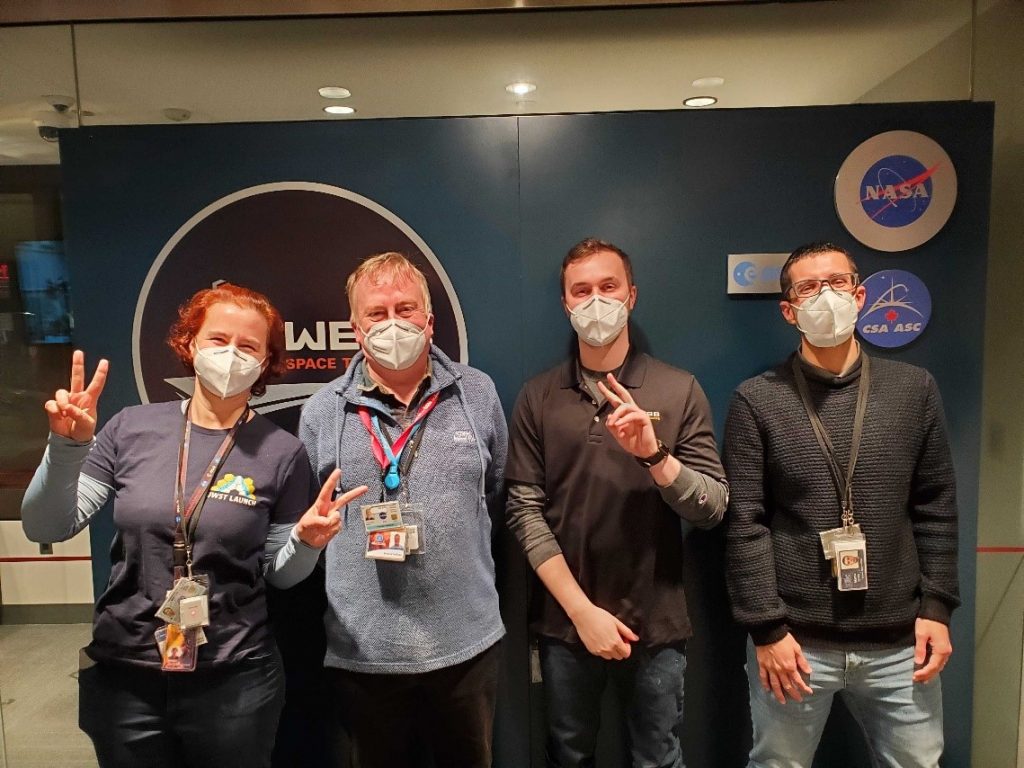Today, Webb teams successfully deployed the observatory’s secondary mirror support structure. When light from the distant universe hits Webb’s iconic 18 gold primary mirrors, it will reflect off and hit the smaller, 2.4-foot (.74-meter) secondary mirror, which will direct the light into its instruments. The secondary mirror is supported by three lightweight deployable struts that are each almost 25 feet long and are designed to withstand the space environment. Specialized heating systems were used to warm up the joints and motors needed for seamless operation.
“Another banner day for JWST,” said Bill Ochs, Webb project manager at NASA’s Goddard Space Flight Center, as he congratulated the secondary mirror deployment team at the Mission Operations Center in Baltimore. “This is unbelievable…We’re about 600,000 miles from Earth, and we actually have a telescope.”
The deployment process began at approximately 9:52 a.m. EST, and the secondary mirror finished moving into its extended position at about 11:28 a.m. EST. The secondary mirror support structure was then latched at about 11:51 a.m. EST. At approximately 12:23 p.m. EST, engineers confirmed that the structure was fully secured and locked into place and the deployment was complete.
“The world’s most sophisticated tripod has deployed,” said Lee Feinberg, optical telescope element manager for Webb at Goddard. “That’s really the way one can think of it. Webb’s secondary mirror had to deploy in microgravity, and in extremely cold temperatures, and it ultimately had to work the first time without error. It also had to deploy, position, and lock itself into place to a tolerance of about one and a half millimeters, and then it has to stay extremely stable while the telescope points to different places in the sky – and that’s all for a secondary mirror support structure that is over 7 meters in length.”
Next Webb will deploy an important radiator system known as the aft deployable instrument radiator (ADIR), which helps shed heat away from its instruments and mirrors. Learn more about Webb’s deployment timeline online.

